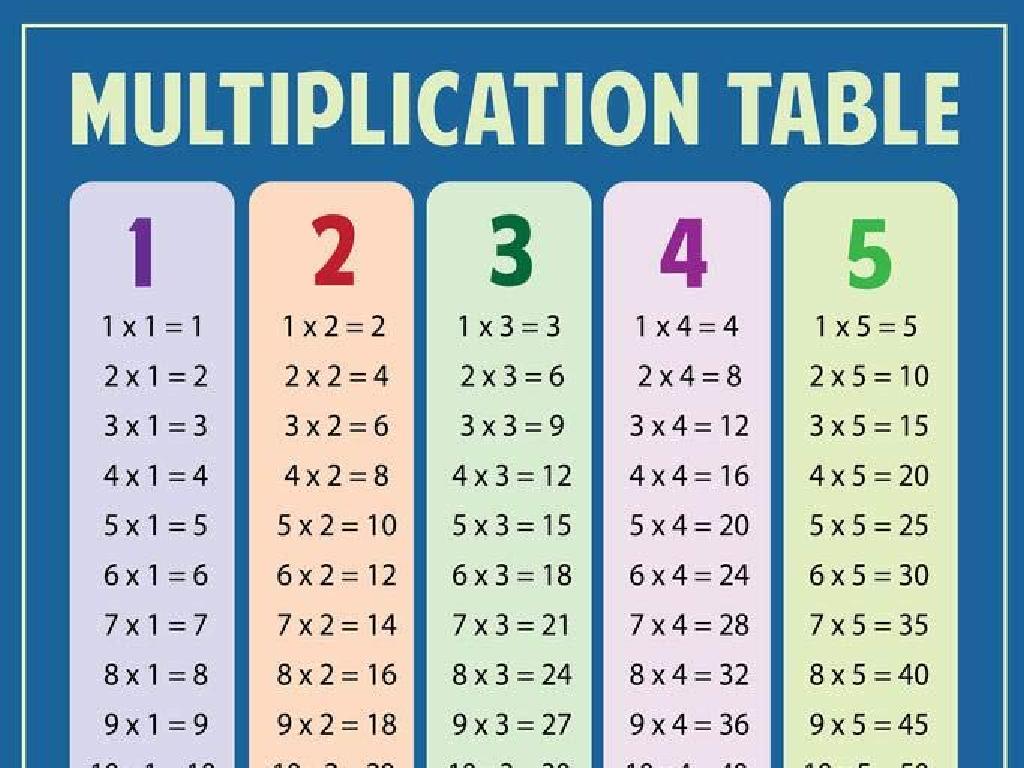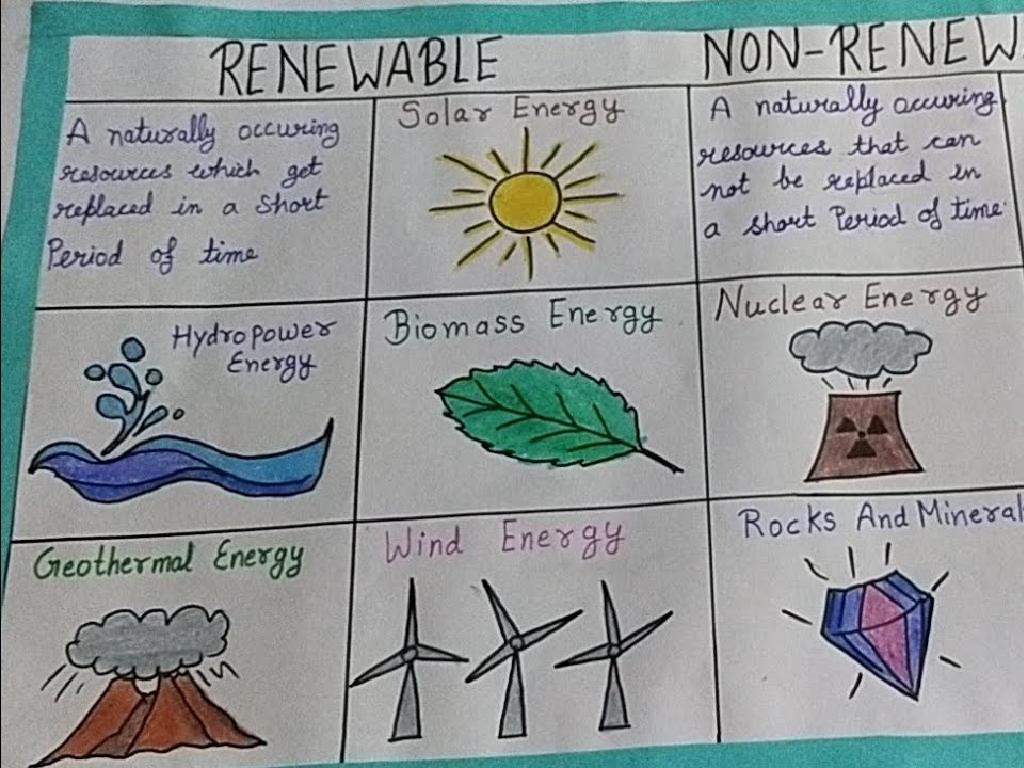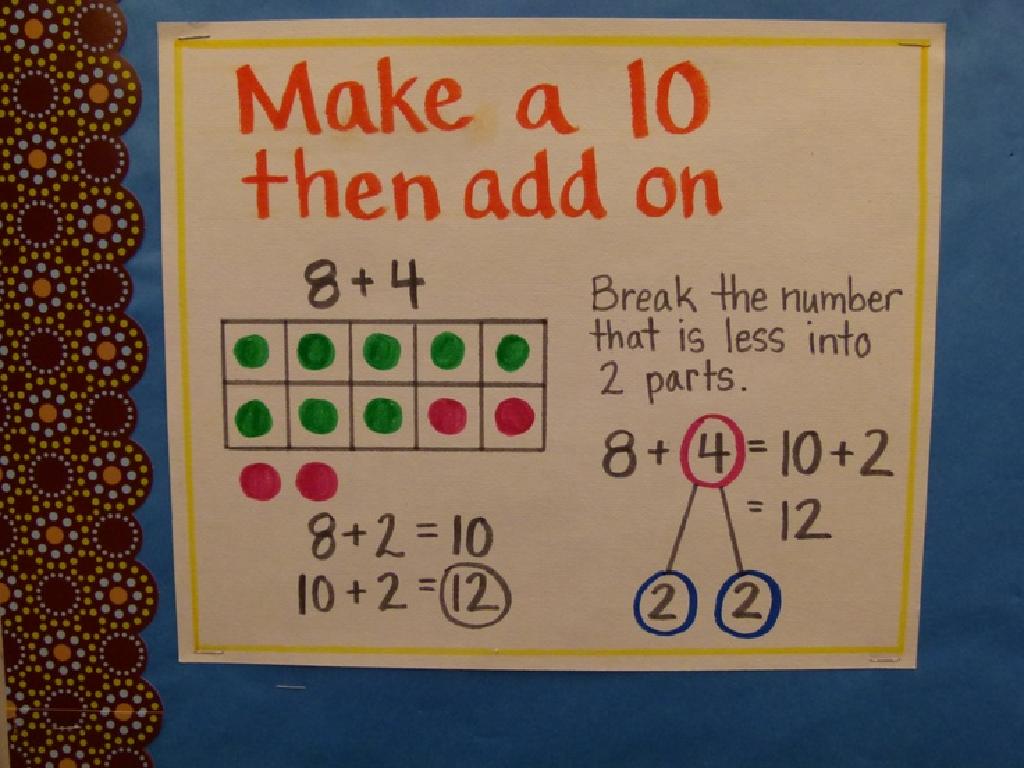Choose Customary Units Of Distance
Subject: Science
Grade: Second grade
Topic: Units And Measurement
Please LOG IN to download the presentation. Access is available to registered users only.
View More Content
Exploring Distance Measurement
– Learning to measure distance
– Grasping the concept of length
– How long or far something is from another
– Tools we use for measuring
– Rulers, tape measures, and yardsticks
– Practice with real objects
– Use classroom items to measure and compare
|
This slide introduces the concept of measuring distance, which is a fundamental part of understanding the world around us. Start by explaining that distance tells us how long or far things are from each other. Show the students the tools we commonly use, such as rulers, tape measures, and yardsticks, and explain that these tools help us find out the length of objects. Encourage the students to think about why measuring is important, like knowing if a bed will fit in a room or how much ribbon is needed to wrap a gift. Plan a hands-on activity where students can use rulers to measure items in the classroom, helping them relate the concept to real-life objects and understand the practical use of measurement.
Understanding Customary Units of Distance
– What are customary units?
– Units of measure used in the U.S.
– Examples: inches, feet, yards, miles
– Small to large: inches for a pencil, feet for a bed, yards for a football field, miles for distance between cities
– Units match the length measured
– Use inches for small objects, yards for bigger areas
– Practice choosing the right unit
|
This slide introduces students to the concept of customary units of distance, which are specific to the United States. Start by explaining what units of measure are and why they are important. Provide relatable examples for each unit: inches (the length of a pencil), feet (the length of a bed), yards (the length of a football field), and miles (the distance between cities). Emphasize the importance of choosing the appropriate unit of measure for different lengths. For instance, we wouldn’t measure the distance between two cities in inches. To reinforce learning, engage students in an activity where they practice choosing the correct customary unit for various objects or distances they are familiar with.
Inches and Feet: Measuring Length
– An inch is a small measurement unit
– Like the width of your thumb!
– 12 inches equal 1 foot
– How many inches in your ruler?
– Use inches for small objects
– Measure a pencil with inches
– Use feet for larger items
– How long is your bed in feet?
|
This slide introduces students to the customary units of distance, specifically inches and feet. Explain that an inch is a small unit of measure, often used to measure objects that are not very long. Show them an inch using a ruler. Highlight that 12 inches make up 1 foot, which is a larger unit of measure suitable for bigger objects. Provide examples of items to measure with each unit: a pencil with inches and a bed with feet. Encourage students to think of other small and big items they could measure using inches and feet, respectively. This will help them understand when to use each unit in real-life situations.
Yards and Miles: Measuring Distance
– Understanding a yard
– A yard is longer than a foot, used for bigger lengths.
– How many feet in a yard?
– 3 feet are equal to 1 yard.
– When do we use yards?
– Yards can measure a classroom or a football field.
– What about miles?
– A mile measures longer trips, like to school or the park.
|
This slide introduces students to customary units of distance, specifically yards and miles. Start by explaining that a yard is a unit of measurement that is larger than a foot, which they are already familiar with. Use a tape measure or a yardstick to show them exactly how long a yard is. Then, discuss that 3 feet make up a yard and give examples of objects that are about a yard long. Next, explain that a mile is a much longer unit used for measuring distances like the one from their home to school. Use a map or a familiar route to help them visualize the concept of a mile. Encourage students to think of and share other examples of things that can be measured in yards and miles.
Choosing the Right Unit of Distance
– Use inches for tiny objects
– Like the length of a pencil or a small toy
– Use feet for person-sized items
– Like your height or a door
– Use yards for a football field
– It’s as long as 100 yards!
– Use miles for city distances
– How far is it from our school to the park?
|
This slide is aimed at helping second-grade students understand the concept of measuring distance using customary units. Start by explaining that different units are used depending on the size of what we’re measuring. Use relatable examples for each unit: inches for small items they can hold in their hands, feet for things about as tall as they are, yards for distances they can visualize on a football field, and miles for long distances such as the space between two places they know. Encourage students to think of other examples and ask them to guess which unit they would use. This will help them grasp the concept of scale and appropriate unit selection.
Let’s Practice Measuring!
– Measure classroom items with rulers
– Choose the right unit for each item
– Inches or feet? Pick the best one!
– Work with a partner to measure
– Compare and discuss measurements
– Did you get the same numbers? Talk about it!
|
This slide is for a hands-on classroom activity where students will apply their knowledge of customary units of distance by measuring objects around the classroom. Provide rulers and tape measures for the students to use. Explain that smaller items are best measured in inches, while larger items can be measured in feet. Pair up the students so they can work together, fostering collaboration and communication skills. After measuring, they should compare their results with their partner’s to practice accuracy and discuss any discrepancies. This activity will help solidify their understanding of choosing appropriate units of measure and using measurement tools correctly.
Class Activity: Measure and Match!
– Receive a worksheet with objects
– Match objects to correct measurements
– Discuss your choices with a partner
– Why does this measurement fit this object?
– Understand units of distance
– Learn to choose inches, feet, or miles
|
This activity is designed to help students understand and apply their knowledge of customary units of distance. Each pair of students will receive a worksheet that includes pictures of various objects and a list of measurements in inches, feet, and miles. They will work together to match each object with the appropriate measurement. Encourage them to discuss their reasoning with their partner, reinforcing their understanding of which units are suitable for different types of measurements. For example, a pencil might be measured in inches, while a playground’s length could be in feet, and the distance between two cities in miles. Provide guidance and be ready to assist with any misconceptions. Possible variations of the activity could include measuring actual objects in the classroom, estimating distances before measuring, or creating a poster with their matched objects and measurements.
Mastering Customary Units of Distance
– Congrats on learning distance units!
– Picking the right unit matters
– Inches, feet, yards, and miles are all important for measuring different lengths.
– Measure stuff at home for practice
– Use a ruler or tape measure to find the length of toys, furniture, or rooms.
– Share your measurements in class!
– Tell us how long or tall your favorite things are using the right units.
|
This slide wraps up the lesson on customary units of distance, reinforcing the importance of choosing the appropriate unit for accurate measurement. Encourage students to practice measuring various items at home, such as toys, furniture, or distances between rooms, using inches, feet, yards, or miles. Remind them to consider the size of the object when deciding which unit to use. For example, use inches for small objects like a pencil, feet for a bit larger items like a bed, yards for things like the length of a backyard, and miles for very long distances like the route from home to school. This practice will help solidify their understanding and prepare them for sharing their findings in the next class.





